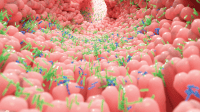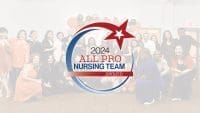Patients lose when nurse staffing is insufficient
Heavy workloads and insufficient staffing affect patient care, according to about 2,000 nurses surveyed worldwide by the International Council of Nurses (ICN). Nine in 10 (92%) nurses said they face time constraints that prevent them from spending enough time with patients. Nearly all nurses surveyed (96%) say that spending more time with individual patients would have a significant impact on patient health. Nearly half (46%) say their workload is worse today than 5 years ago, potentially affecting the quality of patient care.
Read more at ICN.
Vaccine refusal increases risk for childhood pertussis
Medical experts have long believed that herd immunity protects children who don’t receive vaccinations for vaccine-preventable diseases. But a recent case-control study of 156 children (aged 2 months to 18 years) with culture-proven pertussis and 595 randomly selected matched controls without pertussis proves otherwise. Chart reviews of children were selected from the 1996-2007 Colorado Kaiser Permanente health plan files to document vaccine dates or vaccine refusal. Overall, 12% of children with culture proven pertussis had parents who’d refused to allow vaccination, compared with 0.5% of controls. The authors estimate that 11% of these pertussis cases were attributable to vaccine refusal.
Read more at Pediatrics.
Rear-facing car seats recommended for children younger than age 4
Children younger than age 4 are better protected in rear-facing car seats, even though infants usually are switched from rear- to forward-facing seats when their weight reaches 20 lb (at about age 8 months). National Highway Traffic Safety Administration data on 870 children involved in motor vehicle crashes from 1998 to 2003 found that through age 23 months, rear-facing seats provided better protection from all crash types. Nurses and other healthcare professionals should recommend rear-facing car seats for children younger than age 4.
Read more at BMJ.
New guidelines issued for asthma assessment
Variations in defining asthma control, severity, and exacerbations create can make it difficult to determine treatment response in clinical practice and trials. The American Thoracic Society (ATS) and European Respiratory Society (ERS) are now defining asthma control as “the degree to which treatment can ameliorate or eradicate the features of asthma regarding both current clinical control and future risk.” Including “future risk” in the definition is important because some medications improve symptoms but don’t treat the underlying disease, some patients have increased risk of asthma attacks but few symptoms, and medication side effects must be considered when determining need for treatment. New ATS/ERS guidelines recommend that clinicians routinely ask every patient with asthma simple questions regarding short- and long-term symptoms and management, including the number of days with symptoms in the previous 1 to 4 weeks; the number of days per week with symptoms; use of medication for symptom relief; symptoms causing nocturnal awakening; and number of severe attacks in the past year, which may identify patients at risk for future severe exacerbations. Specific recommendations for clinical trial endpoints and definitions of severity and exacerbations were also refined.
Read more at American Thoracic Society.
Sniffing out cancer
A “chemical nose” developed by researchers at Georgia Institute of Technology and the University of Massachusetts can detect subtle differences on the surface of a cultured tissue cell that indicate if it’s healthy or cancerous, metastatic or not. Researchers state, “This result is key. It shows that we can differentiate between the three cell types in a single individual using the chemical nose approach.” The sensors use the polymer PPE (para-phenyleneethynylene) and three gold nanoparticles that tend to bond to the surface of chemically abnormal cells. The PPE breaks off and glows when an abnormal cell surface grabs onto the gold nanoparticles. Scientists can identify the cell type from the glowing PPE pattern. Next step is to test the “nose” on real animal tissue.
Read more at PNAS.
Chlorhexidine bathing in the ICU zaps VRE and MRSA
In a study funded by the Centers for Disease Control and Prevention, nurses at four academic medical centers performed daily bed bathing of all patients from the neck down—first with nonmedicated soap and water for 6 months, then with chlorhexidine gluconate (4 oz of 4% solution mixed in warm water) for 6 months. Surveillance cultures for vancomycin-resistant Enterococcus (VRE) and methicillin-resistant Staphylococcus aureus (MRSA) were done on admission to the intensive care unit (IICU) and at least weekly or on ICU discharge. Rates of MRSA and VRE acquisition were 32% and 50% lower, respectively. The VRE bacteremia rate decreased by 73% with chlorhexidine bathing, whereas the MRSA bacteremia rate remained low and unchanged throughout the study period.
Read more at PubMed.
European Society of Hypertension proposes lower limit on BP thresholds
In guidelines to be published September 2009, the European Society of Hypertension (ESH) will recommend 120/70 mm Hg as the lowest safe blood pressure (BP) threshold for high-risk patients. Recommendations will be included for lowering BP in those older than age 80 to help prolong quality of life. The guidelines no longer will recommend which antihypertensives should be used first-line, second-line, and so forth. Instead, the advice is to tailor therapy to patient circumstances. New American guidelines on hypertension (the eighth edition of the Joint National Committee on Prevention, Detection, Evaluation, and Treatment of High Blood Pressure, or JNC 8) are expected later this year.
Read more at Medscape:
Nurses are at risk for suits
A new Nurse Claims Study developed by Healthcare Risk Management Week, Aon Affinity’s Nurses Service Organization (NSO), and CNA HealthPro found that more than $94 million in indemnity payments and expenses have been paid over the course of the 10 years analyzed to nurses covered by NSO insurance, and an additional $43 million is set in reserve for open suits. Obstetrics/gynecology nurses have the highest average paid indemnity at $335,000; adult medical/surgical nurses have the overall highest total dollar paid indemnity with nearly $30 million aggregate (56% of all closed claims). Thirty-eight percent of claims came from hospital inpatient settings (excluding emergency departments’ 7.8%).
Read more at NSO.


















